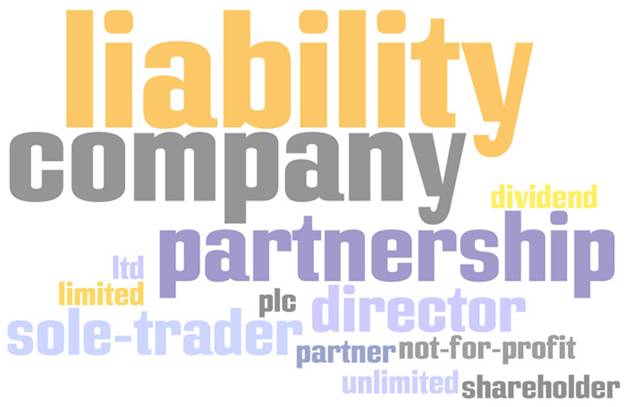In this blog post, Mamta Ramaswamy, a student pursuing her Diploma in Entrepreneurship Administration and Business Laws from NUJS, Kolkata, provides structuring advice to an Indian entrepreneur who wants to expand to the United States.This article is written only for educational purposes and does not constitute a legal advice.
Common legal structure available in the United States
Corporations
This is an organisation which works on the similar grounds as a company (as treated in India). It has perpetual succession, a common seal and a status of separate legal entity. The management and ownership in a company is separate and the owners of the company are the shareholders whose liability is restricted to the amount contributed towards the capital of the company.
Limited Liability Company
This is an organisation which is a combination of a company and a partnership.  This type of organisation is similar to that of a Limited Liability Partnership (as treated in India). The partners (members of the organisation) of the Limited Liability Partnership are liable to the extent of the capital contributed by them and will not be personally liable towards the debts of the company. The partners can bind the other partners by their acts and are agents and principles of every partner. A Limited Liability Company is managed by an agreement entered into by the parties which governs the rights and obligations of the partners amongst each other and that with the Limited Liability Partnership.
This type of organisation is similar to that of a Limited Liability Partnership (as treated in India). The partners (members of the organisation) of the Limited Liability Partnership are liable to the extent of the capital contributed by them and will not be personally liable towards the debts of the company. The partners can bind the other partners by their acts and are agents and principles of every partner. A Limited Liability Company is managed by an agreement entered into by the parties which governs the rights and obligations of the partners amongst each other and that with the Limited Liability Partnership.
General Partnership
This is an organisation similar to the concept of partnership (as treated in India). The partners (members of the organisation) are liable for the act of other partners and can bind the other partners by their act and also, they act as an agent and principle in the respective times. The liability of the partners is unlimited. The organisation dissolves when in the event of death of the partners or in case of termination or retirement.
Limited Partnership
This is an organisation similar to the general partnership organisation. The partners (members of the organisation) are liable for the act of other partners and can bind the other partners by their act and also, they act as an agent and principle in the respective times. The liability of the partners is limited. The organisation dissolves when in the event of death of the partners or in case of termination or retirement.
It is different from the Limited Liability Corporation in the sense that in order to dissolve the Limited Liability Partnership, a procedure as applicable under the law and as provided for under the agreement has to be complied with but a Limited Partnership is dissolved when a partner dies or in event of his termination or retirement.
Sole Proprietorship
Sole Proprietorship is an organisation which is managed and owned by a single person who shall be responsible for enjoying the profits and bearing the loss generated by the organisation.
Generally preferred kinds of legal structure are the corporation and Limited Liability Company. The general partnership is not a good advice for structuring because in an unfaithful event, all the partners are liable and the liability will be unlimited. Similarly, for the limited partnership, but in case of a limited partnership, the liability shall be limited to the extent contributed by the partners of the Limited Liability Partnership. Sole Proprietorship form of structure is not preferred because the liability of the owner in unlimited, there is limited scope of expansion and the growth and management of the organisation is limited.
Analysing the Corporation and the Limited Liability Corporation
Corporation
Its simplicity makes it a favorite structure for investors. Corporations are the most common structure for a business looking for to limit the liability of its shareholders for most of the debts and duties of the entity. They are managed by a board of directors. Corporations are generally easier and less expensive to form than other types of business entities[1]. The geographical location of the corporation is an important issue. A corporation is subject to the laws of the State of its incorporation, and laws vary from State to State. Further, the State of incorporation is not always the one where a company is doing business. A company incorporated in one State may carry out its activities in one or more States and must therefore register and obtain a certificate of doing business, or certificate of authority in each of these States[2].
Corporations are formed through the filing, with the appropriate corporate authorities of a State, of a document entitled Articles of Incorporation or Certificate of Incorporation (“Charter”), depending on the State. Such document includes, without limitation:
- the corporate name, always to be followed by the word Corporation, Corp., Incorporated or Inc.,
- the address of the corporation or of its registered agent,
- the corporate purpose, often drafted in broad terms so as to enable the corporation to carry out any activity which is not forbidden under the statutes of the State of incorporation,
- the number of authorized shares and the par value of the shares, if any,
- the name(s) and address(s) of the incorporator(s),
- the duration of the corporation, which may often be perpetual[3].
With the exception of the corporate charter which is filed with the office of the Secretary of State, the other documents related to the creation of the corporation remain internal to the corporation: they include the By-Laws and the minutes of the first meeting of, respectively, the board of directors and of shareholders. The first meeting of the incorporators sets up the board of directors, which, in turn, appoints the officers and approves the subscription offers presented by the first[4].The dissolution process might be outlined in the by-laws of the corporation. Typically, the shareholders will resolve to dissolve the corporate entity, and a certificate of dissolution is filled with the state. The process requires the filing of paperwork in the state of incorporation, and in each state in which the corporation is qualified to transact business. Also, a corporation must not have any outstanding tax liability in order for the dissolution process to be completed[5].
Limited Liability Corporation (“LLC”)
The LLC can be managed by all the members, like a general partnership, or by managers, like a Limited Partnership. The members are required to adopt an operating agreement, which sets forth, among other things, the rights and obligations of the members and how the company will be operated. The profits and losses of an LLC are distributed to its members according to the operating agreement. Typically, an LLC can conduct a broad range of lawful business activities, except a few types such as banks and insurance companies. An LLC can be made up of one or more owners, referred to as members rather than shareholders, in a corporation, or partners, in a partnership. A member may be an individual, a corporation, a partnership, another LLC or any other legal entity. Most states do not set a limit on the number of members that can be part of an LLC. Non U.S. citizens can also be members of an LLC[6].
The liability of members is limited to their capital contribution, and LLC’s legal obligations do not typically put the LLC owners’ personal assets, such as a home or individual bank account, at risk. Thus, in the event the LLC goes bankrupt, its creditors cannot resort to the members’ personal assets for repayment of the LLC’s financial obligations.[7] Limited liability companies are “pass-through” entities for tax purposes, meaning the entity itself pays no tax.[8] Most states tax LLC profits the same way the IRS does, i.e., the LLC owners pay taxes to the state on their personal returns, while the LLC itself does not pay a state tax.[9] Members of an LLC may enter into an operating agreement to further define the relationship among members, between the members and the company, and with managers, if any. The operating agreement governs the rights and duties of a manager, the activities of the company and the conduct of those activities, and the means and conditions for amending the operating agreement. If the operating agreement is silent on these matters, applicable provisions of the limited liability statute of the applicable jurisdiction, if any, will control such relationships.[10] Certain states’ laws permit LLCs to merge or consolidate with, or into another LLC (or other business entity form), certain business entities to convert into LLCs, and foreign LLCs to become domestic LLCs through the domestication process.[11]
For settling up a LLC, application for an Employer Identification Number (EIN) or an Individual Taxpayer Identification Number (ITIN) and registration with State Tax Administration is required.
[divider]
References:
[1]http://www.lexology.com/library/detail.aspx?g=5262ffcb-f22c-4118-b01f-b49a125c3ba8
[2]http://www.lexology.com/library/detail.aspx?g=5262ffcb-f22c-4118-b01f-b49a125c3ba8
[3]http://www.lexology.com/library/detail.aspx?g=5262ffcb-f22c-4118-b01f-b49a125c3ba8
[4]http://www.lexology.com/library/detail.aspx?g=5262ffcb-f22c-4118-b01f-b49a125c3ba8
[5]http://www.lexology.com/library/detail.aspx?g=5262ffcb-f22c-4118-b01f-b49a125c3ba8
[6]http://www.lexology.com/library/detail.aspx?g=5262ffcb-f22c-4118-b01f-b49a125c3ba8
[7]http://www.lexology.com/library/detail.aspx?g=5262ffcb-f22c-4118-b01f-b49a125c3ba8
[8]http://www.lexology.com/library/detail.aspx?g=5262ffcb-f22c-4118-b01f-b49a125c3ba8
[9]http://www.lexology.com/library/detail.aspx?g=5262ffcb-f22c-4118-b01f-b49a125c3ba8
[10]http://www.lexology.com/library/detail.aspx?g=5262ffcb-f22c-4118-b01f-b49a125c3ba8
[11]http://www.lexology.com/library/detail.aspx?g=5262ffcb-f22c-4118-b01f-b49a125c3ba8












